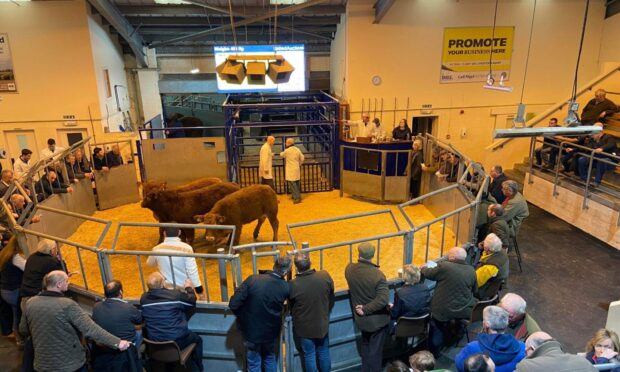Store cattle producers have been rewarded with better prices at the first of this year’s sales held throughout Scotland, but many have said the margin is still not big enough to make ends meet.
That message was echoed by United Auctions’ auctioneer and group director Donald Young, who sold cattle at the firm’s two sales held at Stirling and Huntly centres on Wednesday and Saturday.
Mr Young said that both sales attracted strong cattle and a large ringside of buyers, but pointed out that a huge amount of the cattle sold in Stirling were heading south of the border.
“Our first sales always attract strong, good-quality cattle and finishers are always out to source these types before numbers disappear,” said Mr Young.
“The problem is – it’s the English buyers that are helping to make the trade in Stirling because they’re receiving a better price for their beef. For years, we had a Scottish premium for what we produce, but now we aren’t even on a par with the English, we’re behind.”
Extremely strong demand
At Huntly on Saturday, half of the sale included 14 to 24-month-old cattle, with the rest yearling age.
They met an extremely strong demand and Mr Young said the ringside was the busiest he had seen for a while, with one regular buyer from Yorkshire present.
The sale at Huntly saw bullocks average 272.8p per kg (+32.1p per kg on the year) and heifers cash in at 258.2p (+26.3p).
Mr Young said this resulted in most consignor’s averages being up more than £100 on the year which was most needed to go towards growing input costs producers are facing.
He said: “One of the farmers I spoke to after the sale said his cattle traded £150 dearer than the same sale last year and although he was pleased, he said the prices still weren’t much use for covering the high costs of feed, fertiliser and fuel.”
United Auctions also produced a centre record average of 193.8p per kg for OTM cattle, with top prices of £2,100 for a cow and £2,120 for a bull.
Mr Young added: “There is more demand than ever for processing meat which is most likely down to the cost of living crisis. Consumers in the UK are preferring to buy mince and stew rather than steaks, so the strong prices in the cull ring will remain for sometime yet.”
Looking ahead, he reckons store cattle will remain at a steady trade, but numbers will undoubtedly tighten going forward.


Conversation